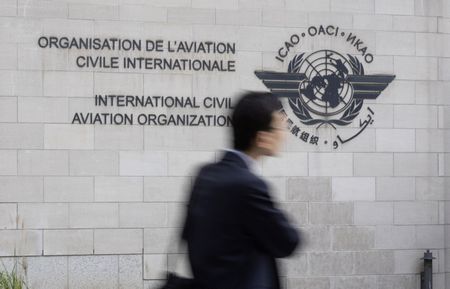By Wayne Cole and Stella Qiu
SYDNEY (Reuters) -Australia’s central bank is getting closer to joining its peers in cutting interest rates, having sat tight for over a year now, but much will depend on the data to decide whether it can move as early as February.
Wrapping up its December policy meeting, the Reserve Bank of Australia kept the cash rate unchanged at 4.35% but softened its hawkish stance. The statement omitted a previous line that the RBA Board was “not ruling anything in or out” as well as policy needing to remain restrictive.
“Recent data on inflation and economic conditions are still consistent with (November) forecasts, and the Board is gaining some confidence that inflation is moving sustainably towards target,” the RBA Board said in a statement.
The Australian dollar fell 0.9% to $0.6380 and there-year bond futures rallied 9 ticks to 96.289, the highest since October. Swaps now imply there is a 57% chance of a rate cut in February, with a first easing more than fully priced in by April next year.
Markets were poised for a steady outcome, but some had bet the RBA could take a dovish turn after data showed economic growth in the third quarter was surprisingly weak. Wage growth has also underwhelmed even though the labour market has shown resilience partly underpinned by rising public sector jobs.
When asked about the prospects of a cut in February, RBA Governor Michele Bullock said she does not “actually know”, adding that there would be the quarterly inflation data, as well as the labour market and consumption indicators before the decision.
“All I’d say is we’re watching the data,” said Bullock.
“We think things so far are moving in line with our forecasts and if they continue to move in line with our forecasts then at some point, we’re going to be convinced that inflation is coming back to the band and we will be in a position to consider that.”
Bullock said the board did not consider a rate cut at Tuesday’s meeting, adding that it took a deliberate decision to change the language in the statement in response to the softer economic data.
Headline inflation slowed to 2.8% in the third quarter, back in the target band, but that was thanks to temporary government rebates on electricity bills, while core inflation was stubborn at 3.5%.
PIVOT TO FEB RATE CUT?
The RBA has held its policy steady for over a year now while other global policymakers, including the U.S. Federal Reserve, have started cutting rates from their elevated levels. The central bank has said that the current restrictive rate of 4.35% – up from 0.1% during the pandemic – is required to bring inflation to its target band of 2-3%.
The National Australia Bank, which tipped a cut in May, said they cannot rule out a move in February if data is especially weak while Citi Australia still is of the view that the bar to a cut in February is high.
The Commonwealth Bank of Australia concurred while tipping a February rate cut.
“We are encouraged by today’s statement for our call for a February rate cut. But we are not across the line yet,” said Gareth Aird, head of Australian economics at CBA.
The RBA’s dovish turn came hours after a survey from the National Australia Bank showed that business conditions slid to the lowest since late 2020 in November, suggesting the economy hasn’t picked up momentum as expected this quarter.
An anticipated rebound in consumer spending has yet to appear either, with consumers largely holding onto the windfall from the government’s tax cuts and paying off debt, according to bank research.
“The RBA left no doubt that it isn’t happy with current levels of core inflation but… hopes have risen that the first cut could be in February after all,” Sean Callow, a senior analyst at ITC Markets.
“Removing the ‘not ruling anything in or out’ line is very welcome and probably overdue.”
(Reporting by Stella QiuEditing by Shri Navaratnam)











